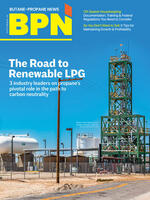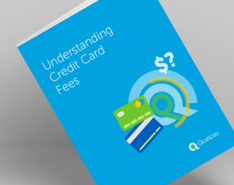
There’s little doubt that our industry has been under assault from competing energy sources over the years. Perhaps recently, it seems even more so — subsidized natural gas expansion bills proposed by legislators in several states certainly come to mind. So does the seemingly constant “electrify everything” movement from environmentalists.
While the arguments from these groups aren’t particularly fair, competition in general is good for both industry and consumers alike. Competition, fair or otherwise, forces businesses to adapt, improve upon technology and revise business strategies and goals. As an industry, propane marketers have a tremendous opportunity with renewable propane to change the narrative, revise our messaging and be a proactive leader of biofuels.
In many instances, it seems that as an industry, we’re already behind. The New England Fuel Institute, the country’s largest heating oil association, has been promoting renewable liquid heating fuels for years. At the Northeast Industry Summit in 2019, the heating fuel industry committed to a net-zero carbon dioxide emissions standard by the year 2050. The commitment includes a 15% reduction of CO2 emissions by next year, and a 40% reduction in emissions by 2030.
The heating oil industry isn’t alone in its promotion of biofuels. Earlier this year, UGI Corporation (the parent corporation of AmeriGas) announced a more than $1 billion investment in renewable fuels, primarily renewable natural gas (RNG), renewable dimethyl ether and renewable propane through 2025. RNG seemingly got all of the press.
Read any article on renewable fuels and it’s dominated by investments in RNG, renewable diesel, sustainable aviation fuel and both blue and green hydrogen. News of investments in renewable gasoline from wood waste and forest residue has become more prominent. In response to President Joe Biden’s desire to revise the current Renewable Fuel Standard, groups like Evergreen Action call for less blending of liquid fuels like ethanol with gasoline in favor of more low-carbon biofuels with less climate impact. You would be hard-pressed to find mention of renewable propane in any such business articles to date.
Our challenges do not end at competing with other renewable fuels. Our industry is also facing headwinds from more sustainable energy sources like wind, solar and geothermal heat pumps. Perhaps even more challenging is that many environmentalists argue a net-zero carbon commitment doesn’t go far enough. Real-zero — the elimination of all carbon emissions — is necessary to mitigate further climate disaster.
Relying on the idea that propane is the cleanest of all the fossil fuels isn’t good enough anymore. Some may argue that future carbon-capture technology is the solution. Why wait? Rather than being reactive, we need to immediately adopt a renewable product in order to sustain our industry for the future. Propane marketers across the country are in a unique position to lead the movement.
The current investment in renewable propane in the Northeast and West Coast is a terrific start, but it mustn’t stop there. In order to make substantial progress, propane marketers in the Midwest, Southeast and mountain states need to embrace renewable propane as well. We must demand that suppliers upstream produce even more renewable propane, and we must make it easily accessible from coast to coast.
As much as we benefit from our fragmented industry — namely making strong connections with customers in mostly rural areas across the country — it provides its challenges, too. We do not have the advantages that large utilities do when pivoting business strategies, goals, objectives and messaging. We’re forced to do it collectively. Anything short of that is likely doomed to failure.
State associations, the National Propane Gas Association (NPGA), the Propane Education & Research Council (PERC) and the newly created Renewable Propane Alliance can only carry the renewable propane banner so far. The market should lead the push toward renewable propane (with an assist from NPGA, PERC and the Renewable Propane Alliance).
The push begins with every propane marketer blending renewable propane with their traditional propane inventory. Then, marketers must become passionate advocates for renewable propane. Force suppliers to produce more of it, and convince end consumers to demand it.
No one knew they needed an iPod, iPhone or iPad before Apple developed them — except for Steve Jobs. Automakers have adopted a similar strategy with the production of electric vehicles, even as they are faced with the challenge of charging-station infrastructure. Let’s help consumers realize they need renewable propane and why they do. Electricity and lithium-ion batteries aren’t as green in most places as people think they are — at least not yet. According to the Environmental Protection Agency (EPA), a full 25% of greenhouse gas emissions in the U.S. come from the burning of coal and natural gas to produce electricity. Only 40% of electricity is currently generated from sustainable sources. Furthermore, the electrical grid can be completely unreliable at times, even more so during ever-increasing extreme weather events.
RNG is still methane, a harmful greenhouse gas, regardless of its feedstock. Natural gas leaks are particularly problematic. Solar and wind energy is completely dependent on weather conditions. The proper disposal of expired solar panels brings on its own set of unique environmental problems.
Renewable propane is none of these things. In fact, it’s difficult to think of any unintended environmental consequences from the immediate adoption of renewable propane sourced from biomass.
Capitalism can solve our climate change problem. Economics and the market can fix it before courts, legislatures and prohibitive carbon taxes try to do it for us (the Supreme Court’s recent West Virginia vs. EPA ruling and the peril of President Biden’s Build Back Better Act in the U.S. Senate notwithstanding).
But to do so means it is incumbent upon of all of us in the industry, led by propane marketers across the U.S., to quickly adopt renewable propane, demand more output from producers and begin blending it now — and, just as importantly, get our renewable propane message out loud and clear.





